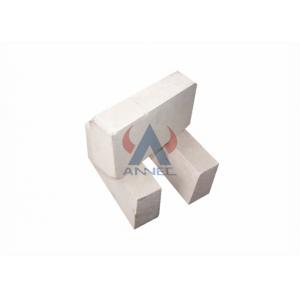

Add to Cart
Ultra-Lightweight Alumina Bubble Brick For Furnace Insulation Layer
Compared with ordinary alumina bubble bricks, our ultra-lightweight
alumina bubble bricks have the following characteristics:
(1) Lower bulk density. Compared with ordinary alumina bubble
bricks with 99% AI2O3 content and a bulk density of at least 1.5
g/cm3, ultra-lightweight alumina bubble bricks can reduce the
weight of the furnace body sufficiently to save material, energy
and cost;
(2) Better thermal shock stability compared to ordinary alumina
bubble bricks with a bulk density of 1.5 g/cm3 and AI2O3≥99%;
(3) Extremely low thermal conductivity, only 30% of traditional
products, At 400ºC, the thermal conductivity of hot surface of
traditional alumina bubble brick with bulk density of 1.5g/cm3 and
AI2O3≥ 99% is 0.78w/(m.K), while the thermal conductivity of
furnace hot side of Rongsheng's
ultra-lightweight alumina bubble brick is 0.26w/(m.K), and its
thermal insulation effect is 3 times of the traditional one. The
use of ultra-lightweight alumina bubble bricks can make lower cold
side temperatures under the same requirement of insulation layer
thickness and greater energy saving, or thinner insulation layer
under the same requirement of cold side temperature.
(4)It can be used directly in the working layer of the furnace, and
has strong resistance to the erosion of hydrogen fluoride in the
furnace for anode material.
Technical Data of Ultra-lightweight Alumina Bubble Brick
| Item | JM-26 |
| BD,(g/cm3) | ≤1.0 |
| CCS,(MPa) | ≥3.0 |
| TC,400ºC(W/m ·K) | ≤0.26 |
| PLC (1500ºC*6),% | ≤1.0 |
| Al2O3, % | ≥45% |
Application of Alumina Hollow Ball Brick
Alumina Bubble Brick is a kind of very important refractory
material for resisting high temperature and special demands of
positions for furnace and kiln, which is mostly used as insulating
brick for insulation layer of furnace and kiln, and also can be
used for service linings in manufacturing high-purity quartz for
the electronics industry such as ceramic tile linings in gas
turbines and backup linings in reactors.
